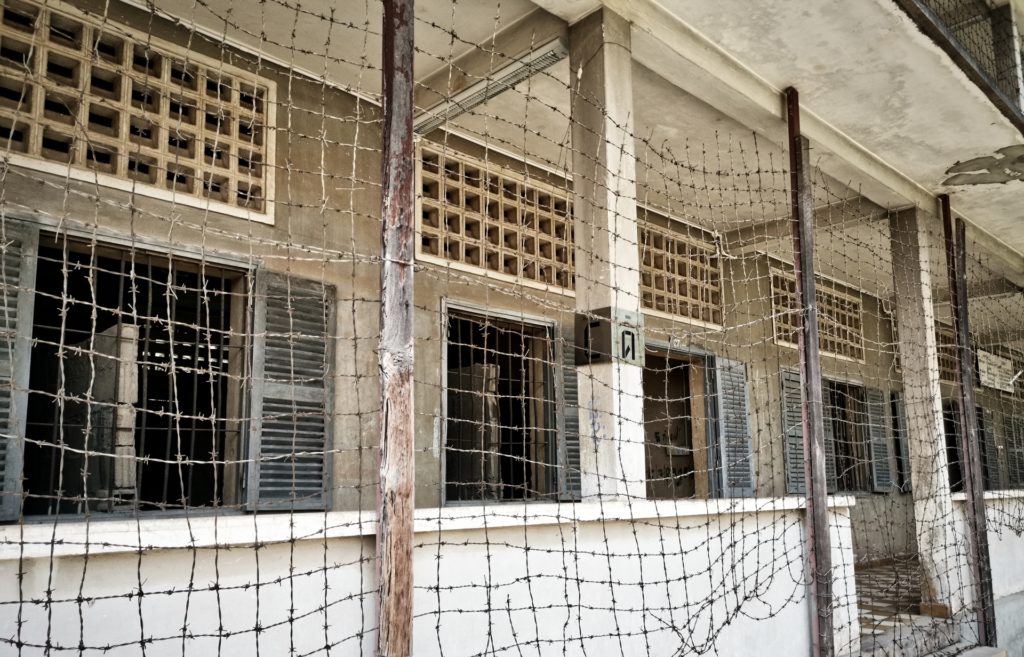Prison S21 (in Phnom Penh) – The Khmer Rouge internment camp
The period of Khmer Rouge rule is one of the darkest chapters in Cambodian history, claiming the lives of some 2 million people in just five years (the regime lasted from 1975 to 1979, ending with the invasion of the Vietnamese occupation forces)

One of the memorials to the atrocities of that time that is still accessible today is the former S21 prison, which now houses the Tuol Sleng Genocide Museum (Tuol Sleng means “walnut hill”, which was the name of the elementary school that was located next to the current exhibition building). The museum is located right in Phnom Penh and is open daily to visitors. The site not only serves to educate tourists about this dark period of Cambodian history, but also to help Cambodia’s own people remember this reign of terror and come to terms with their own history. For this reason, no entrance fees are charged to Cambodians.
Camp S21 was run by “Comrade Duch,” whose real name was Kaing Guek Eav (and whose sentence was limited to only life imprisonment, though he also died in custody in 2020), and is considered one of the cruelest prison camps in recent history. In addition to S21 prison, 196 more prisons of this type were built throughout Cambodia under Khmer Rouge rule: S21, however, gained particular sad notoriety because 18,000 people were actually imprisoned here: Only four of those imprisoned survived captivity (all of them children hiding under piles of laundry). The goal of the camp was to intern “system-critical people” (and for this it was enough to be considered “too intellectual” as a teacher, monk or professor, for example, and thus an obstacle to the Khmer Rouge’s goal of creating a “self-sufficient peasant state”) and to extract (to a large extent under torture) corresponding confessions.
The building in which the camp was located had previously been a high school. The dimensions of the camp were such that about 1,700 people worked for the prison (for example as guards or as interrogators, but also as cultivators of the surrounding fields). Even today, visitors can see the inconceivably cruel accommodations and torture tools. There are also numerous pictures of the prisoners taken at the time of their imprisonment. Here, clan detention often applied: if a family member was suspected, the entire family was taken into custody to prevent relatives from taking revenge later.
The targeted killing of detainees did not take place directly in the S21 prison (whose primary goal was to elicit false confessions from those tortured), but at the Killing Fields of Choeung Ek.
The Tuol Sleng Genocide Museum impressively documents the Khmer Rouge’s cruel reign of terror. For tourists who also want to deal with the history of Cambodia, the visit of the prison S21 is virtually a must: However, it is recommended to deal with the history of the place in advance, so as not to be completely overwhelmed by the violence of the images and the torture tools.